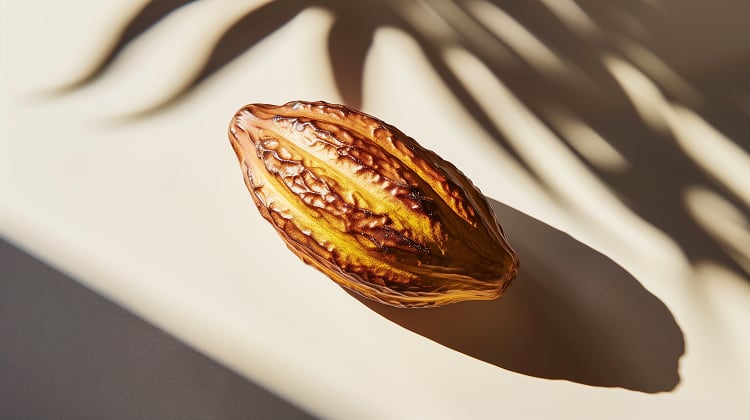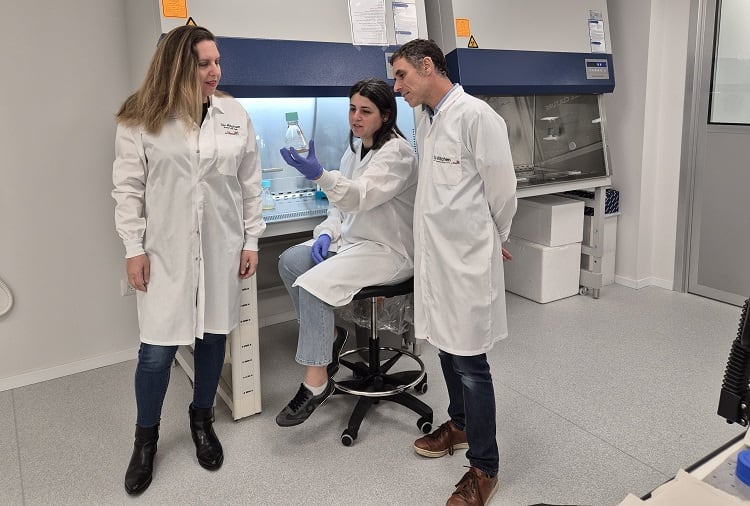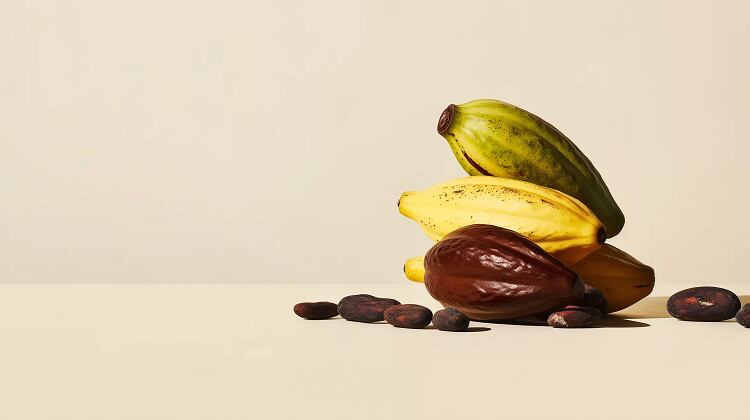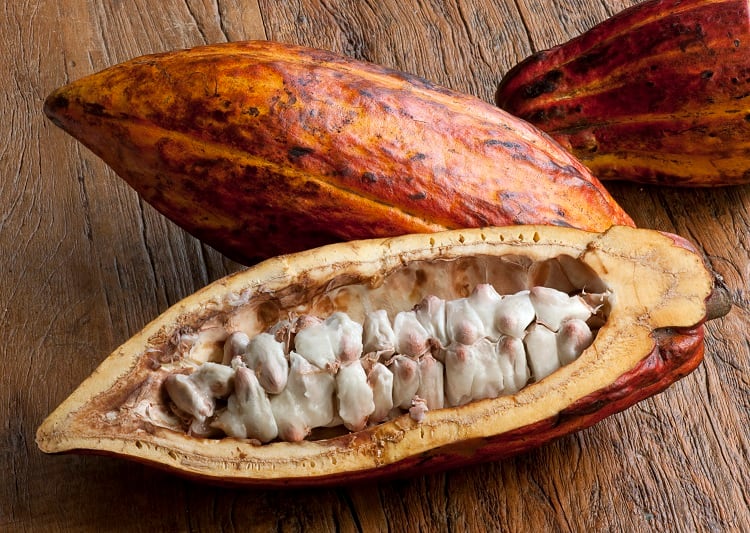Cultivating meat is like cultivating cocoa, but simpler. That’s how cellular agriculture newcomer Kokomodo sees it, as the start-up emerges from stealth to disrupt the chocolate sector.
The ‘game changing’ technology enables a stable supply of cacao (the raw, unprocessed version of cocoa) all-year-round, believes co-founder and CEO Tal Govrin. “With climate change threatening cocoa, a non-agricultural method of production could ensure its survival for future generations.”
The start-up’s first product? A ‘high-value’ cell cultivated cocoa powder designed for products across food, beverage, supplement, and even cosmetics industries. After that, the start-up plans to launch a cell cultivated cocoa butter, the CEO revealed.
Is cultivated cocoa like cultivated meat, but for chocolate?
Whatever the terminology – be is cultivated, cultured, cell-based or lab-grown – the technology is predominantly associated with next-generation meat production.
To produce cultivated meat, real animal cells are grown in bioreactors with a cell culture medium, before being harvested, prepared, and packaged into final products. To produce cell cultivated cocoa, the same principles apply. But overall, the process differs ‘greatly’.
Kokomodo selects cells from the 'finest' cacao strains sourced from Central and South America and cultivates them into a cell culture. From there, the start-up moves the cells into bioreactors, where the cacao is harvested and processed.
Overall, cocoa cells are ‘simpler’ to grow and require less complex media, which makes it cheaper and easier to scale, Govrin told this publication. In terms of structure, for example, cultivated meat is significantly more complex, requiring a mixture of fat and muscle to truly replicate the texture of meat.
“Cocoa cell cultures, on the other hand, do not require a defined 3D structure at the end of the process, but can be supplied as a powder.”
Other differences include the way plant-based cells grow and differentiate. Not only can cultivated cocoa be produced without the same focus on structure, but the initial cells used to establish the suspension also make up the final product.
Cell cultivation technology is well known in the world of meat, but it can also be used to produce dairy. German start-up Senara is one such example, claiming to be the first cultivated milk company in Europe.
Another major difference, particularly when it comes to costly growth media, is that plant-based cells produce fewer toxins, meaning less media can be used. “Plant growth media is simpler than that used for cultured meat, containing only vitamins and minerals and growth-promoting factors.”
How Kokomodo plans to stand out from a (slowly) growing crowd
With climate change predicted to render the vast majority of cocoa farmland unfit for production by 2050, it's unsurprising Kokomodo is not the only company investigating the potential of cultivated cocoa. Others include Celleste Bio (also headquartered in Israel) and Finnish confectioner Fazer, who announced a partnership with researchers at VTT back in 2022 to explore cellular agricultural techniques in cocoa.

For Kokomodo therefore, the obvious question is how is it setting itself in the newfound category?
“We have a large collection of cell lines that are characterised and stable, a process that takes a few years to achieve,” explains the start-up’s CEO. “Our cell lines originate from different varieties and genotypes and from different parts of the cacao seedling, making the lines even more unique.
“This allows us to exercise complete control over the cacao product’s design by taking advantage of the different blends of cell lines, the specific output of antioxidants, proteins, lipids, and even the granular details like powder size and behaviour, setting new industry standards.”
Kokomodo was born as a joint venture between The Kitchen FoodTech Hub by Strauss and R&D company Plantae Bioscience. The start-up is emerging from stealth mode with a $750,000 (€691,000) investment from The Kitchen FoodTech Hub and the Israel Innovation Authority (IIA).
Kokomodo’s cultivated cocoa products are intended for use in CPG products such as chocolate, beverages, spreads, and protein products. But as a novel food, its ingredients will need to undergo pre-market approval before being allowed to commercialise.
Govrin did not disclose which geography is at the top of its rollout agenda, but suggested the decision is strategic. “We’ve carefully evaluated a range of attractive markets based on factors like size, growth potential, and fit with our value proposition.”
Why develop cultivated cocoa and not a cocoa alternative?
Cell cultivation is not the only way to help reduce strain on the cocoa supply chain. An increasing number of innovators are developing cocoa substitutes for the manufacture of chocolate alternatives.
When will the price of cocoa come down?
That’s the question on every chocolate maker’s lips. Although the price has been on the rise since the beginning of last year, 2024 saw it skyrocket to reach an eyewatering $10,760 (€10,039) per metric tonne.
Many factors have influenced the cocoa price hikes, including an attack of Cocoa Swollen Shoot Virus (CSSV) in cocoa-producing countries Ivory Coast and Ghana.
Whether cocoa prices will ever drop to early 2023 levels is not yet known, but if chocolate makers continue to use the same amount of cocoa in their formulations, it’s unlikely.
Some start-ups are developing cocoa-free chocolate from oats and sunflower seeds, others from upcycled grapes or even faba beans.
By using known, regularly consumed raw materials, these innovators don’t need pre-market approval to commercialise their ingredients. So why isn’t Kokomodo also going down the alt choc route?
The answer lies in the start-up’s ‘profound passion’ for preserving the supply of ‘real cacao’, according to Govrin. “Cacao is known to be the ‘food of the gods’ as it contains an impressive number of antioxidants and is a nutrient-dense superfood packed with health benefits.”
Kokomodo wants to recreate ‘the real thing’ and is doing so from cells sourced from premium beans. “It’s not ‘like’ cocoa, nor is it a ‘substitute’. With Kokomodo’s cellular agriculture technology, we can ensure controlled, consistent-quality cocoa that matches traditional chocolate flavours and textures.
“It offers the genuine taste and characteristic of real cocoa – such as aroma, flavours and sweetness – while capturing the nutraceutical values and health benefits of cocoa, differentiating it from chocolate substitutes that contain a high level of refined sugar and vegetable fat.”
Where did ‘Kokomodo’ come from? And where is it going?
As to the name Kokomodo, the first half comes from the phonetic spelling of cacao as per the Nahuatl (known informally as Aztec) peoples. In some languages, cacao is indeed spelled ‘koko’.
The second part of the word, ‘modo’ means mode, method, or way of doing something in Spanish. “At Kokomodo, we value the traditional of cacao while producing it in a new method,” explains the CEO.

Now that the start-up is officially out of stealth mode, it will shortly start its fundraising process. The funds will be used to scale up from lab to pilot production, which Govrin suggests will help close the pricing gap.
“We will also focus on client engagement and on widening our range of products, as well as regulations and IP submissions to extend our go-to-market strategy.”




